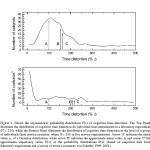Illusions And Dangers In Trump’s “America First” Policy: An Interview With Economist Robert Pollin
No Comments yetDonald Trump will probably go down in history as having pulled the biggest political con job in US electoral politics. With no coherent ideology but lies and false promises, he managed to win the support of millions of white working-class people whose lives have been shattered by globalization and stagnant wages. In an exclusive interview for Truthout, Robert Pollin, professor of economics and co-director of the Political Economy Research Institute at the University of Massachusetts at Amherst, puts into context Trump’s stance on globalization and his “America first” stance.
C.J. Polychroniou and Marcus Rolle: Resistance to globalization was the preeminent policy theme in Trump’s election campaign, as he not only attacked immigration and promised to build a wall on the US-Mexican border, but rallied against existing trade agreements, including the North American Free Trade Agreement (NAFTA), and promised to withdraw the US from the Trans-Pacific Partnership (TPP) trade deal, a promise he carried out immediately upon entering the White House. Given that the US remains the world’s only true superpower and that multilateral trade agreements constitute an integral component of the global neoliberal economy, where, firstly, does resistance to globalization locate Donald Trump on the politico-ideological spectrum and, secondly, what is, in your view, his ultimate vision for the United States?
Robert Pollin: Donald Trump is difficult, if not impossible, to locate with respect to the global neoliberal project; first of all because all evidence thus far supports the conclusion that he has no real convictions at all, other than self-promotion. It’s true that he campaigned on a strong nationalist agenda that diverged in many ways from neoliberalism — i.e. from a program of free trade, unregulated financial markets and freedom for multinational corporations to operate as they please. That program did speak to the experiences of the US white working class, which, as even former Federal Reserve Chair Alan Greenspan recognized in the 1990s, had become “traumatized” by the forces of neoliberal globalization. It is unclear how forcefully Trump intends to diverge from neoliberalism in practice, despite his rhetorical appeals to his base within the US white working class. To me, relative to understanding Donald Trump’s “ultimate vision,” I think it is much more important for progressives to become much clearer in defining our own vision on globalization. Specifically, in my view, what is most important is establishing a clear distinction between neoliberal globalization and globalization in any form at all.
Neoliberal globalization is all about creating freedom for private capital and financial speculation, which in turn has created an unprecedented global “reserve army of labor,” to use Marx’s brilliant turn of phrase. The global reserve army of labor has indeed pitted US workers against workers in China, India, Kenya, Mexico, Guatemala — you name it. This has weakened workers’ bargaining power in the US, which in turn is the most basic factor driving wage stagnation in the United States for the past 40 years, even as US average labor productivity has more than doubled over this period. But we should be able to envision an alternative framework in which the US and other countries are open to trade and immigration within a context of a commitment to full employment and a strong social welfare state. Within a full employment economy with strong social protections, an open trading system will not produce a global reserve army of labor to anything close to the extent we have experienced over the past 40 years. This is the key point.
What has been NAFTA’s impact on US workers, and what was wrong with the Trans-Pacific Partnership trade deal?
It is first important to recognize that NAFTA and the TPP were not simply about “free trade” between the US and Mexico. Much less advertised but at least equally significant was that these were deals that gave freedom of movement and strengthened property rights to multinational corporations and financial institutions. With respect to trade, per se, between Mexico and the US, the basic impact of NAFTA has been, again, to expand the reserve army of labor — i.e. pitting US workers against Mexican workers. This is by no means an abstract matter. What I am talking about are situations in which, say, autoworkers in the US try to bargain for a raise. But the plant owners’ response to a demand for increased wages is, effectively: “You don’t like what you are getting paid? Fine, we will move across the border to Mexico, where wages are one-quarter of what you make, or less. Good-bye and good luck.” That has been a credible threat to workers for a long time. NAFTA only made it still more credible.
As part of his “America first” agenda, Trump has vowed to bring back manufacturing jobs by imposing high tariffs on certain imports (for example, he plans to do so on imports of Canadian softwood lumber) and has stressed that all jobs must be first offered to Americans before they can be offered to foreign nationals. How realistic are such policy postures, and what could be the consequences if every other country opted to adopt similar approaches?
I don’t think Trump will end up following through on such threats, even while he will likely keep up the rhetoric to appeal to his base. For example, he has already backed off on his threat to declare China a currency manipulator. Of course, in practice, China is no less of a “currency manipulator” than it was six months ago. What has changed is that, with Trump now in office, he is hearing from his top economic advisers — Gary Cohn and Steven Mnuchin, both veterans of Goldman Sachs — that trying to bully China is more likely to hurt US capitalists as well as have dangerous consequences for US military interests. In general, I do not think imposing high tariffs is either realistic or desirable, and I don’t think Trump has any serious intention to follow through on such threats.
A more realistic policy framework would work from the existing “Buy America” program that has been in place for decades in the area of federal government procurement, but that has been only weakly enforced in practice. Under Buy America, federally-funded procurement contracts in manufacturing — such as building railcars for municipal public transportation systems — are supposed to give preferences to US manufacturers. That is a reasonable framework both at the level of federal as well as state and local government policy that most other countries already follow as well, as one important element of a broader set of industrial policies in support of US manufacturing and jobs.
The issue of immigration continues to divide public opinion in the United States, as it does elsewhere around the Western world, insofar as its impact to the economy and society is concerned. Is there any evidence that the inflows of foreign labor reduce jobs or Americans’ wages?
The best evidence of which I am aware comes from the UC Berkeley economist David Card, who finds that the impact of immigrants in the US labor force has little, if any, impact on wages of US native-born workers at the lower end of the job market. Card reached this conclusion by comparing conditions in the low-wage labor market in US cities that have a very high proportion of immigrants, such as Miami, New York and Los Angeles, with cities, such as Philadelphia or Atlanta, in which the immigrant population is much smaller proportionally. I myself, along with [Assistant Research Professor at the Political Economy Research Institute] Jeannette Wicks-Lim replicated Card’s findings over the years of the Great Recession. Our conclusion was the same as Card’s — the mere presence of a high proportion of immigrants in a given local labor market did not negatively impact wages of native-born workers. This is because immigrants in cities, such as Miami and New York, are also people who buy things and set up their own businesses in these cities. They are, therefore, expanding the markets and jobs in these cities, as well as supplying more people to these local labor markets.
What about undocumented immigration? There are some studies indicating that undocumented immigration depresses wages of unskilled American workers.
The same general result applies to both legal and [undocumented] immigrants. Immigrants do take jobs in the low-wage labor market. But they also expand demand by their own purchases, and they also create their own businesses in some cases. That said, there are specific areas of the economy in which the share of immigrant workers is very high — agricultural farm work is perhaps the best example. In this case, you do get more of a reserve army of labor effect, in which the overall wage bargaining dynamic hurts workers against their employers. But we need to be careful not to generalize from the specific case of farmworkers to the general case of all immigrant workers operating in all areas of the US economy.
Looking at the first 100 days of the Trump administration, an “America first” policy begins to look like a military-first policy aimed towards global hegemony. If the Trump presidency is ushering in a new era of militarism, doesn’t this fit with Trump’s unilateral trade approach?
“America first” as a foreign policy is nothing new, of course. US global military dominance has been the established program for generations. But this is fully consistent with the point that neoliberal economic policy is clearly the preferred framework for big capital in the US, since it is the program that enables multinational corporations and financial institutions to operate most profitably throughout the world. As such, US militarism has been operating on behalf of an open economic system, supportive of US capital. I don’t think that is going to change in a fundamental way under Trump. Overall, again, I think that Trump’s global economic policies will be characterized mostly by incoherence, with heavy doses of “America first” rhetoric. Within such incoherence, it is again most important, in my view, that progressives go much further in advancing a policy approach that is open to global trade and investment, but as part of a broader framework in which full employment and a strong social welfare state are the foundations, in the US and elsewhere.
What am I talking about more specifically? At present, the US is officially at full employment, according to the Federal Reserve. But this is with about 23 million people either unemployed, underemployed or having dropped out of the labor force during the Great Recession but not returning since. The federal government needs to directly expand job creation through spending on 1) building a zero emissions green economy; 2) traditional infrastructure, especially public transportation; and 3) education. This can be financed in large part through the so-called Robin Hood Tax — i.e. taxing Wall Street transactions, which can generate in the range of $300 billion per year. This would mean moving money out of Wall Street and into vital areas of social spending, which can also be sources of new job creation. It can also be financed by the Federal Reserve directly purchasing bonds floated by states and municipalities to support public spending on the green economy, infrastructure and education. In addition, we need to move out of our existing disastrously inequitable and wasteful health care system, and replace it with something like “Medicare for All.” That would provide decent health care provision for everyone, while still reducing the overall economy’s spending on health care by about 20 percent. There is a model bill of just such a measure being debated now in California.
Finally, the US needs to practice industrial policies to support a manufacturing revival. This would include guaranteeing public sector purchases of US manufactured products, low-cost financing for innovative US manufacturers and the development of regional support systems for manufacturing firms in various areas of the country. The German economy is a good model on this point — they are a manufacturing and export powerhouse, even though their average manufacturing wages are about 30 percent higher than in the US. With this combination of Green New Deal, social infrastructure and industrial policies pushing the economy toward true full employment — i.e. anybody who is willing and able to work can get a decent job — the US could still manage to purchase a good share of imports from all over the world, especially low-income economies that can gain great benefits from being able to sell their products in the US market. Any negative impacts from such import purchases will be greatly diminished because the reserve army of labor in the US will have been itself greatly diminished by policies of full employment and a strong welfare state guaranteeing the well-being of US workers and their families.
Copyright, Truthout. May not be reprinted without permission.
You May Also Like
Comments
Leave a Reply








